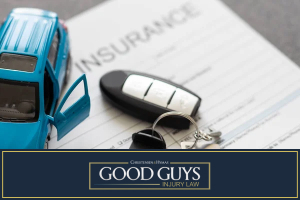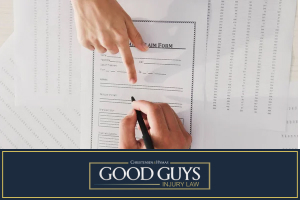
Car insurance in Utah is a must-have for every driver, but understanding how it works can be confusing. At Good Guys Injury Law, we know that car insurance companies sometimes hesitate to cover certain forms of bodily injury and property damage. We can help you determine minimum liability limits and find the best car insurance rates.
Learn more about how an accident might impact the car insurance rate you get from your insurance provider below. Then, contact us to ask about personal injury claims and optional coverage on your policy.
Table of Contents
Overview of Car Insurance Requirements in Utah
In Utah, every driver must have car insurance—it’s the law. This ensures that if you’re involved in an accident, there’s a way to cover the costs of damages and injuries. Utah’s insurance laws are designed to protect you and anyone else who might be affected by an accident. So, having the right insurance isn’t just a personal benefit; it’s part of being a responsible driver.
Minimum Coverage Laws for Utah Drivers
Utah law requires certain minimum coverages for all drivers. As of my last update, these include $25,000 per person, $65,000 per accident for bodily injury, and $15,000 for property damage (Utah Code Section 31A-22-305). These minimums are in place to ensure that, at a basic level, there’s financial support available in the event of an accident. But remember, these are just the minimums—many drivers opt for more coverage for better protection.
Understanding Liability Coverage
Liability coverage is the bedrock of your car insurance policy in Utah. It covers the costs if you’re responsible for damaging someone’s car or causing an injury in an accident. It protects your pocket from being hit with large bills if you’re at fault. Liability coverage doesn’t protect you against personal injuries or car damage. That’s where other types of coverage come in.
Penalties for Driving Without Insurance in Utah
Driving without insurance in Utah is a risky move. If you’re caught, you could face several penalties. For starters, you might get fined between $400 and $1,000. In addition, your driver’s license and vehicle registration could also be suspended. You can only legally drive once you get insurance and pay to reinstate your license and registration.
Types of Car Insurance Coverage Available in Utah

When it comes to car insurance in Utah, you’ve got options. Understanding these different types of coverage helps you build the right policy for you. Each type of coverage serves a specific purpose and offers different kinds of protection.
Liability Only
“Liability only” insurance is Utah’s most basic form of car insurance. It covers damages and injuries you cause to others in an accident. It’s important to remember that liability-only insurance doesn’t cover your own injuries or vehicle damage. So, if you’re in an accident and it’s your fault, you’re on your own for your expenses.
Choosing liability-only insurance is an excellent way to save money on premiums. It meets the legal requirements and offers protection against the costs of damaging others’ property or injuring someone in an accident. But it’s essential to weigh the risks. If you have a newer or high-value car or want more comprehensive protection, liability may not be enough.
Collision Coverage
Collision coverage is all about your vehicle. It covers repairing or replacing your car if it’s damaged in an accident, regardless of who’s at fault. This is particularly important in Utah, where road conditions can vary and accidents are not uncommon.
Having collision coverage can be a financial lifesaver. If your car is damaged in an accident, this coverage can help you get back on the road quickly. It’s also important to consider the value of your vehicle when deciding on collision coverage. This coverage can be precious if you have a newer or more expensive car.
Comprehensive
Comprehensive coverage is like the safety net of car insurance. It can cover damage to your vehicle from non-collision events. This includes theft, vandalism, weather damage, and collisions with animals. Comprehensive coverage can be very useful in Utah, where weather can be unpredictable and wildlife encounters are possible.
Comprehensive coverage gives you a broader range of protection for your vehicle. It’s not just about accidents on the road; it’s about all the other things that can happen to your car. For many drivers in Utah, comprehensive coverage is a vital part of their insurance policy. It ensures you’re covered, no matter what surprises life throws.
How Premiums are Calculated for Utah Drivers
A mix of factors determines insurance premiums in Utah. These include your driving record, vehicle style, age, and gender. Insurance companies look at your history and the likelihood of you claiming to set your rate. Essentially, the riskier you seem to the insurer, the higher your premiums.
The Claims Process in Utah: Step-by-Step Guide

- Immediately After the Accident: Ensure everyone’s safety and call the police. It’s crucial to have an official report, especially for insurance claims.
- Exchange Information: Get the other driver’s insurance details, contact information, and the make and model of their vehicle. This is vital for your claim.
- Document the Scene: Snap pictures of the accident, including vehicle damage. This visual evidence supports your claim.
- Notify Your Insurance: Reach your insurance provider as quickly as possible. Prompt reporting is critical to a smooth claims process.
- Submit Required Documentation: Provide your insurer with all necessary documents, such as the police report and accident photos.
- Insurance Adjuster’s Assessment: An adjuster will review the accident details to determine fault and coverage. Cooperation with them is essential.
- Claim Resolution: After assessment, the insurance company will offer a settlement. Review this carefully, and consult a lawyer if needed.
Role of Personal Injury Protection (PIP) in Utah’s No-Fault System
Personal Injury Protection (PIP) is critical to Utah’s no-fault system. PIP provides immediate medical expense coverage after an accident, regardless of who’s at fault. This means quicker financial assistance for medical treatments. PIP coverage is mandatory in Utah, ensuring all drivers have basic medical expense coverage.
But PIP isn’t just about medical expenses. It also can cover other costs like lost income if you cannot work due to the accident. This makes PIP a valuable part of your insurance policy, providing a safety net beyond medical bills. However, it’s essential to know that PIP has limits. For major accidents with serious injuries, PIP may not cover all expenses, which is where other coverages and legal action can come into play.
How Fault Affects Insurance Claims in Utah

Fault plays a significant role in insurance claims in Utah. If you’re found at fault for an accident, your liability insurance covers the other party’s damages. This system is straightforward but can get complex if the fault is shared in Utah.
For example, if you’re found to be 30% at fault in a car accident, any settlement you receive will be reduced by 30%. This rule emphasizes the importance of careful driving and following traffic laws. It also shows why having good insurance coverage is crucial. If you’re at fault, your insurance is your financial safeguard against the costs of the accident.
Dealing with Uninsured and Underinsured Motorist Coverage
Uninsured and underinsured motorist coverage should be part of your car insurance policy in Utah. This coverage protects you if you’re in an accident with a driver who either doesn’t have insurance or doesn’t have enough insurance to cover the damages. With the number of uninsured drivers on the road, this coverage offers additional protection.
Tips for Choosing the Right Insurance Policy in Utah
- Consider Your Vehicle: The style of car you drive in Utah influences your insurance needs. If you have a new or expensive car, you’ll want more than just the basic coverage. Consider how costly it would be to repair or replace your vehicle if it’s damaged or totaled.
- Assess Your Driving Habits: Your driving habits should guide your insurance choices. Opting for more comprehensive coverage can be a smart move if you drive frequently or have a long commute. More time on the road means a higher risk of accidents.
- Understand Your Financial Situation: Financial situation is critical to choosing insurance. If you’re in a position where paying for damages out-of-pocket would be difficult, higher coverage limits can offer better financial security.
- Evaluate Additional Coverages: Beyond the primary liability, consider adding collision, comprehensive, or uninsured motorist coverage. These can protect you from various scenarios that basic coverage doesn’t cover.
- Shop Around and Compare Quotes: Don’t accept the initial insurance quote you get. Compare quotes from different insurers to find the best rate and coverage for your needs. Remember, the cheapest option is only sometimes the best.
Reach Out To Good Guys Injury Law for Help With Car Insurance in Utah

Dealing with car insurance after an accident in Utah can be overwhelming. That’s where Good Guys Injury Law comes in. Our team has the expertise to guide you through the complexities of insurance claims and disputes.
Contact us today to schedule a free case consultation with our team.





